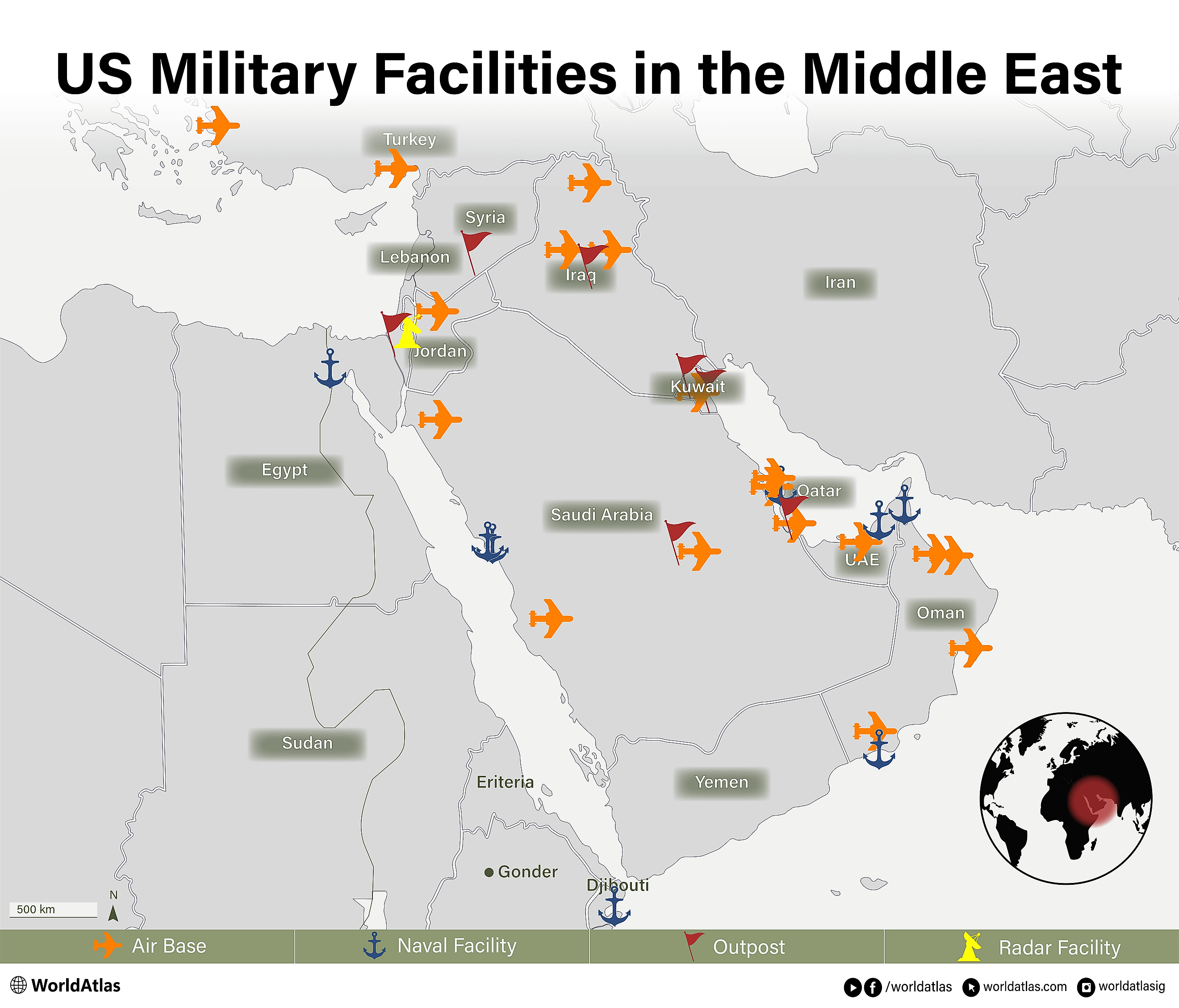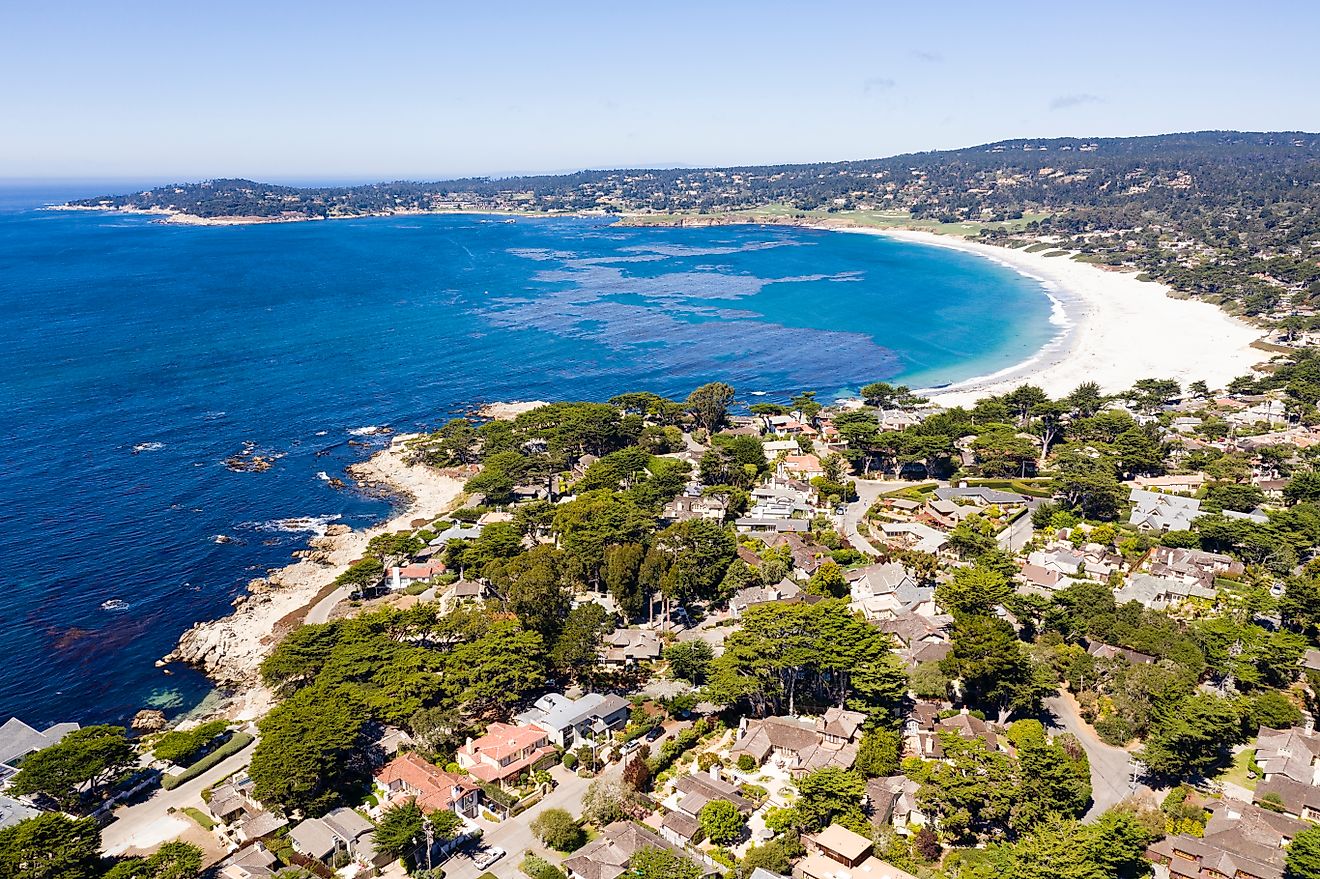
US Military Bases In The Middle East
According to Pentagon figures collated by Al Jazeera, between 40,000 and 50,000 U.S. troops are presently spread across at least nineteen installations from Egypt's Mediterranean coast to Oman's Arabian Sea shoreline. Eight of those sites are classified as permanent, Bahrain, Egypt, Iraq, Jordan, Kuwait, Qatar, Saudi Arabia, and the United Arab Emirates (UAE), while the remainder are "enduring" or "contingency" outposts that can swell or shrink as operations demand.
Bahrain
Naval Support Activity Bahrain sits astride the shipping lanes of the lower Gulf and hosts U.S. Naval Forces Central Command and the Fifth Fleet. A deep-water harbour capable of handling nuclear-powered carriers now sees littoral combat ships, patrol craft, and Coast Guard cutters cycling through high-tempo patrols. In late May, the USS Canberra became the first of four new LCSs to join the squadron, underscoring the base's growing role in mine-counter-measures and drone boat interception.
Kuwait
Kuwait has served as America's logistics springboard since 1991. Today, Camp Arifjan still stocks pre-positioned armour, but Ali Al Salem Air Base has eclipsed it in strategic weight. Home to the 386th Air Expeditionary Wing, Ali Al Salem is "the primary air-lift hub and gateway for delivering combat power," moving everything from MQ-9 Reaper drones to casualty-evacuation C-130s across the theatre.
Qatar
Spread across the desert southwest of Doha, Al Udeid is the largest U.S. installation in the Middle East, housing elements of U.S. Central Command, Air Forces Central, and Special Operations Command. Roughly 10,000 U.S. and coalition troops rotate through its two-mile runway each year. On 23 June 2025, Iran fired at least six Fateh-313 missiles at the base; four were intercepted, two fell short, but the episode forced Qatar to close its airspace for six hours and highlighted CENTCOM's single-point-of-failure dilemma.
Saudi Arabia
A generation ago, Prince Sultan Air Base (PSAB) provided the launching pad for Operations Desert Fox and Enduring Freedom. After the 2003 invasion of Iraq, the U.S. drawdown left a skeleton crew, but satellite imagery taken on 20 June 2025 shows a fresh surge, 53 F-16 fighters, 22 KC-135 tankers, and several E-3 AWACS aircraft crowd the ramp. Analysts see PSAB as a dispersal field for assets otherwise concentrated at Al Udeid.
Elsewhere in the kingdom, the walled compound of Eskan Village continues to house American trainers and intelligence personnel working with Riyadh's missile-defence units, an arrangement Tehran brands a "legitimate retaliation target."
United Arab Emirates
Al Dhafra Air Base near Abu Dhabi hosts the 380th Air Expeditionary Wing and ten flying squadrons, ranging from F-35As to KC-10 tankers and the enigmatic RQ-170 stealth drone. The wing's exercises with French Rafales and UAE Mirage 2000s illustrate the coalition depth the U.S. enjoys in the Emirates, even as Emirati officials quietly hedge by buying South Korean surface-to-air systems.
Iraq
U.S. forces withdrew from Iraq in 2011 only to return in 2014 to fight the Islamic State. Today, around 2,500 troops remain, split between Al Asad in Anbar province and Al Harir in Iraqi Kurdistan. Both bases have taken sporadic rocket and drone fire since Israel's October 2023 invasion of Gaza reignited the "axis of resistance." On 23 June 2025, air-defence sirens at Al Asad heralded the activation of a new C-RAM battery as reports circulated of inbound drones.
Baghdad's January 2024 request to negotiate a "finite timeline" for withdrawal has stalled amid the current crisis, but the Iraqi parliament's Fatah bloc insists that "if the U.S. stays, so will the missiles."
Jordan
The desert expanse of Muwaffaq Salti Air Base, 100 km northeast of Amman, has absorbed $143 million in U.S. upgrades since 2018, including new aprons for special-operations helicopters and ISR drones. German, Dutch and Belgian detachments share the aprons, reflecting NATO's collective interest in shielding Israel's eastern flank.
Its distance from Iran once made Muwaffaq Salti a sanctuary. In the era of 2,000 km Ghadr missiles, that buffer has evaporated.
Egypt
Cairo hosts no American combat squadrons, but the Naval Medical Research Unit Three (NAMRU-3) in Abbassia operates the Department of Defense's largest overseas infectious-disease laboratory, a legacy of Cold-War cooperation on cholera and Rift Valley fever. The facility's epidemiologists provided real-time genomic sequencing during the 2023 Sudan Ebola outbreak, underscoring how America's posture is not solely about hard power.











